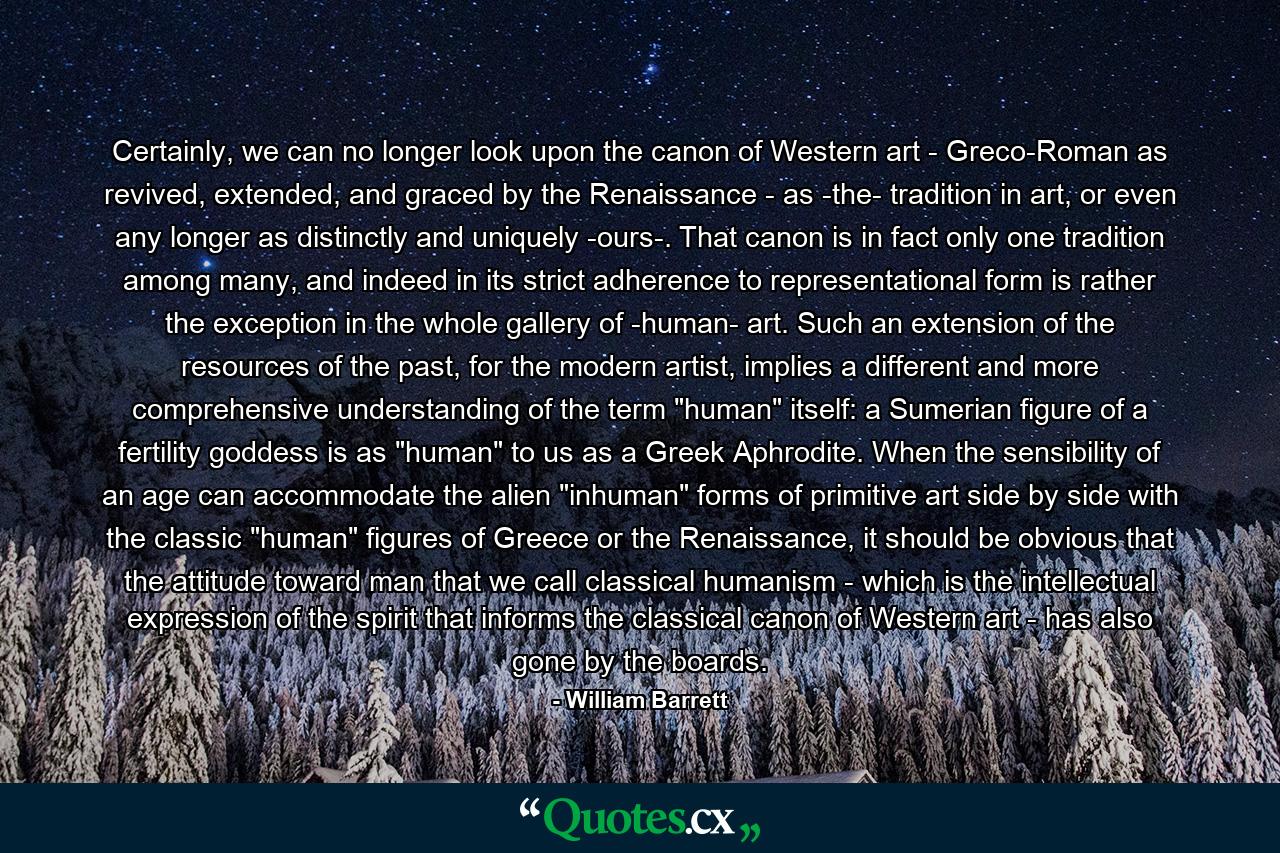Certainly, we can no longer look upon the canon of Western art – Greco-Roman as revived, extended, and graced by the Renaissance – as -the- tradition in art, or even any longer as distinctly and uniquely -ours-. That canon is in fact only one tradition among many, and indeed in its strict adherence to representational form is rather the exception in the whole gallery of -human- art. Such an extension of the resources of the past, for the modern artist, implies a different and more comprehensive understanding of the term “human” itself: a Sumerian figure of a fertility goddess is as “human” to us as a Greek Aphrodite. When the sensibility of an age can accommodate the alien “inhuman” forms of primitive art side by side with the classic “human” figures of Greece or the Renaissance, it should be obvious that the attitude toward man that we call classical humanism – which is the intellectual expression of the spirit that informs the classical canon of Western art – has also gone by the boards.
